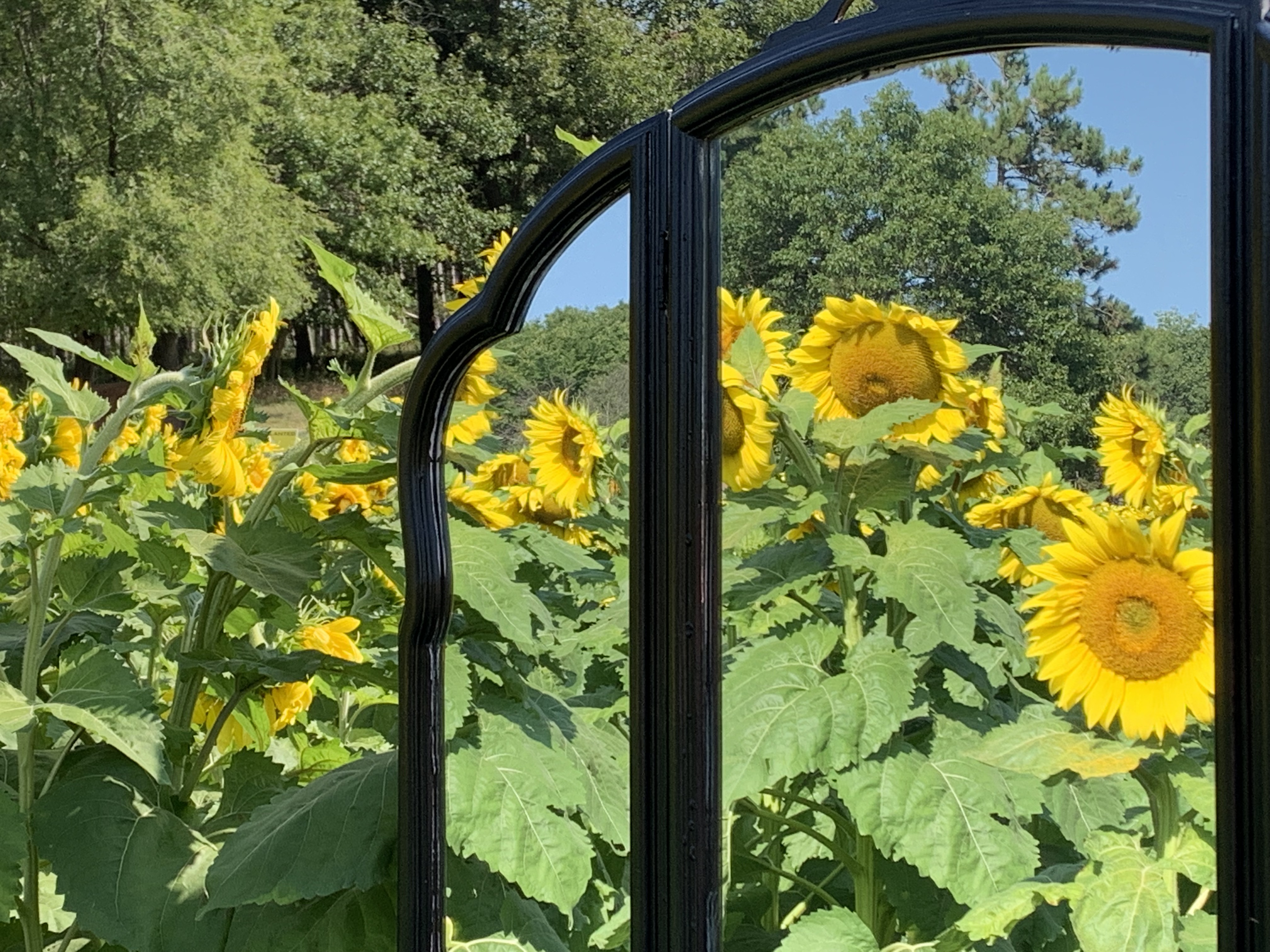
This vintage-inspired scroll-arm bench was in pretty poor shape when I rescued it.
One leg was wiggly, and it was covered with what looked like coffee stains. On the plus side, these flaws would be easy to remedy. Read on to see how this bench “shaped” up.

Step 1: Deconstruction
This bench sat in my workshop for months, waiting for inspiration. I’d considered many different fabrics but hadn’t settled on just the right one. Then a client came along and requested the bench — provided I could remove the scrolled arms. After unscrewing the legs, I stripped off the dirty fabric to get a good look at whether that was possible.
Yep, it was! You can see the gap here between the arm (on right, still covered in fabric) and the seat (on left, with burlap cover). All it would take to remove the arms would be to disconnect the small bridge of wood on each side.

Step 2: The Seat Box
Once I removed the arms and all of the old upholstery, I was left with a basic box. But it was seriously wonky. When it had been constructed with industrial staples, the center brace had been installed incorrectly. Plus, the builder had relied on just two straps to provide the all the support for the cushioning. So I first removed the brace and re-installed it correctly with screws.

Then I added the proper amount of jute webbing to provide firm support. I weave the straps in this manner to provide the best tension. You can also see where I’ve stapled foam around the box’s edge for comfort.

Step 3: Adding the Fluff
Since I didn’t want the finished bench to look like a block of foam on a slab of wood, I arranged the foam to create a gentle curved top. First, I cut a slab to go down the middle of the bench, beveling its ends to slope to each side.

Then I added the full piece of foam to form the seat on top. When it’s all stapled down, the larger piece of foam curves over that slender piece in the center. It will also meet the edges of the foam wrapped around the perimeter of the seat box so no gap will remain and the whole top will be cushioned. (Yes, that is my beloved Surebonder® pneumatic staple gun in the pic! You didn’t think I’d go a whole post without mentioning it, did you?)

Step 3: Finishing it up
Once the foam was in place, it was time to complete the upholstering. To smooth the look and protect the foam, I wrapped the entire seat box in batting and stapled it beneath the seat. I followed that with a soft pastel pink performance velvet from Spoonflower® that my client selected.
While waiting for the fabric to arrive, I primed the dark wood legs with Zinsser® BIN primer and painted them with Farmhouse® paint in “Classic White.” Once the fabric was in place, it was a simple matter of screwing the legs back in place and tightening the bolts to eliminate the wobble.

Isn’t this elegant!
Perfect for the bedroom of my client’s daughter. The seat is fluffy and soft now, inviting a good read or some excellent daydreaming.
Status: SOLD
Check back next week for more from my workshop. And stop by my Instagram, too (@serendipitysequelsmn). For comments or questions about my work, use my contact page.

